ホーム > 住まい・水道・下水道 > 下水道 > Sewerage in Kobe
Sewerage in Kobe
最終更新日:2023年3月23日
ここから本文です。
Thank you for visiting our website !
![]()
Kobe is the 7th-largest city in Japan with a population of approximately 1.52 million people as of 2019.
In Kobe city, domestic wastewater is treated through the public sewerage system and six WWTPs, which serve 98.7% of the population [over 1.52 million residents as of end of fiscal year (FY) 2019].
History of Sewerage Development in Kobe
Following the establishment of the Act on Construction of Kobe as an International Port City in 1950, the construction of Kobe's first sewerage project began in 1951. During the period of high economic growth in 1960s, Japan experienced some serious environmental pollution problems. To preserve water environments and implement fundamental solutions to exacerbating water pollution, the Water Pollution Control Law was enacted, and the Sewerage Law was revised in 1970.
In Kobe, we focused on investing in sewerage construction in 1970s, aiming for 100% installation rate of flush toilets.
| History | |
| 1951 | Modern sewerage projects began Constructed separate sewerage system (in which sanitary sewage and stormwater are collected in separated sewers) |
| 1958 | The first modern sewerage treatment plant in Kobe begins operation (CHUBU STP) |
| 1970 | Focused investment for sewerage construction |
| 1990 | Water reuse projects began |
| 1995 | Great Hanshin-Awaji Earthquake (Higashinada STP was closed) |
| 2001 | Reclaimed wastewater supply began |
| 2008 | Automobile fuel project using KOBE Biogas began |
| 2010 | Kobe Biogas injected into city gas mains International contribution project began |
| 2011 | Sewerage network system began operation |
| 2012 | KOBE designated as "Water environment solution Hub" |
| 2013 | Digestive sludge phosphorus recovery verification project began |
Separate sewer system
Kobe's sewerage has used a "separate sewer system" which use different pipes for rainwater runoff and sanitary sewage, since its beginning, aiming for the effective utilization of resources and the improvement of water environment. Sanitary sewage is sent to water reclamation centers and stormwater is discharged directly to rivers and into the sea.
Facilities of the Sewerage
Generally, all treatment plants and pumping stations are built on sites near the coasts.
| Sewers | Sewers transport sewage to waste water treatment centers. They are also referred to as "Sewer pipes". |
| Pumping Stations | Pumping stations are used in bringing sewage to the waste water treatment plant. |
| 6 Wastewater Treatment Plants (WWTPs) | Waste water treatment plants have two major functions, treatment of sewage and sludge generated as a result of the treatment of sewage. |
Kobe Biogas
Various usages of Resources obtained from sewage
Treated water, sludge and heat energy are produced by sewage treatment plants.
Our promotion of effective utilization of these resources helps to control the production of greenhouse gas, and contributes to an environmentally friendly city that effectively utilize waste products.
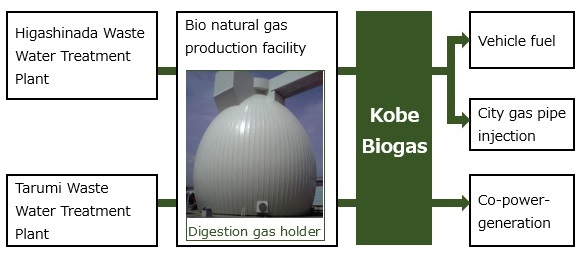
25 Years after the Great Hanshin-Awaji Earthquake
| Vehicle fuel | City gas pipe injection | |
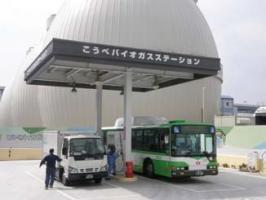 |
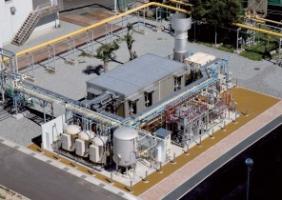 |
|
| Gas Station Filling volume:2,700 m3 per day Number of units:7,115 units |
City gas production facility Injection quantity: 1,070,000 m3 per year (Equivalent to 2,000 households) |
|
| Co-power-generation | Use of local biomass for sludge treatment efficiency improvement and biogas increase |
|
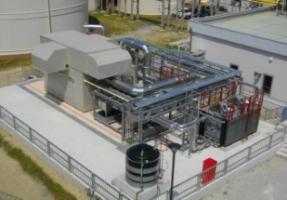 |
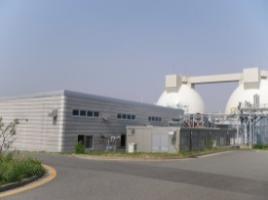 |
|
| Power generation by digestion gas Power generation volume: 10,000 m3 per day |
Facility accepting biomass |
Water Reuse
In Kobe, reusing of treated wastewater for water trucks, landscaping, car washing or flushing toilets is widely used. Water reuse can be an option for making a contribution to Low Carbon Society.
Use of Recycled Water
| Water trucks | Landscaping | |
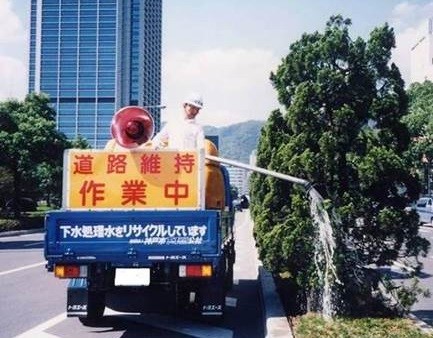 |
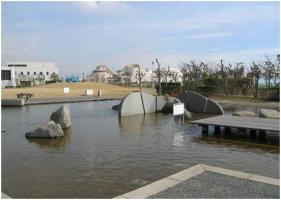 |
|
| Car Washing | Flushing toilets | |
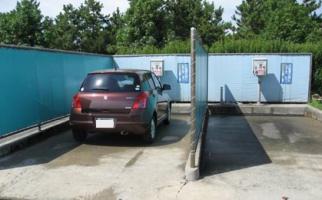 |
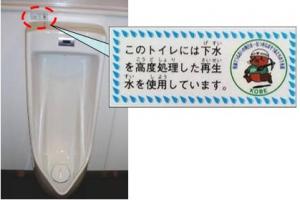 |
Kobe City Flood Hazard Map
Kobe City Flood Hazard Map is a map that provides risks and evacuation information in case the river overflows, or in case there is rainwater flooding (urban-type flooding) due to typhoons, heavy rainfalls or the like. It is available in four languages: Japanese, English, Chinese, and Korean.
Great Hanshin-Awaji Earthquake
Water works and sewage facilities have been affected heavily by the earthquake. In particular, the largest wastewater treatment plant 'Higashinada WWTP' completely hadn’t woked for 100 days.
Sewerage Network System
Based on lessons from the Great Hanshin-Awaji Earthquake, the city connected 4 treatment plants via deep underground large-diameter shielded pipes (total length: approx. 33 km). This forms a sewerage network system that will continue to operate even during a disaster.
>>read more(Sewerage Network System)
- 神戸の下水道
- 市民の皆様へ
- 下水道への質問事例
- 下水道のお問い合わせ先
- 経営計画・プロジェクト等
- 下水道の広報
- 浸水から街を守る
- 下水道台帳(埋設管の情報)
- 災害時こまらんトイレ!(公共下水道接続型仮設トイレ)
- 公共下水道事業の概要と統計
- 下水道における新型コロナウイルス感染症関連情報
- 下水道事業への事業提案の窓口
- 排水設備の工事と修繕(指定工事店一覧)
- 産業廃棄物埋立処分業務事業者の決定
- 会計年度任用職員(一般事務・特定事務)の募集
- Sewerage in Kobe
- 下水道管のリニューアル事業
- 下水道を知る
- 経営計画・取組
- 災害対策
- 入札情報
- 農業集落排水
- 神戸市下水道条例施行規則の一部改正【意見公募結果】
- 神戸市下水道条例施行規則の一部改正【意見公募結果】